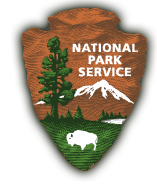Sediment removed from Motor Mill
By Larry Stone
https://motormill.org/lab/wp-content/uploads/2020/11/Silt-removal-article-by-L.-Stone.pdf
Visitors to Motor Mill, southeast of Elkader along the Turkey River, this fall will get a whole new perspective on the 150-year-old landmark. For the first time in a century, you can look into the cavernous basement to see the massive stone footings, and wooden posts and beams that support the seven-story, limestone structure. Workers from C. J. Moyna and Sons Construction, assisted by volunteers, toiled for more than two weeks this summer to remove 50-plus truckloads of sediment that had accumulated in the building from years of Turkey River flooding. In the process, they discovered the original four turbines that powered the gristmill from1870 to 1883. Earlier this year, when Motor Mill Foundation president John Nikolai approached John Moyna for advice, Moyna quickly concluded that this was no job for just amateur volunteers. Thus, he donated the time of his staff, and the use of his equipment, to help complete a project that the Motor Mill Foundation board had only dreamed about. To gain access to the basement, Moyna supervisor Andy Koehn and assistant Bryan Willson first had to build an access down from the adjacent Galaxy Road to the basement arches on the upstream side of Motor Mill. And once the digging inside the mill began, water seeped in from the Turkey River, requiring them to regularly add more rock to keep their machines from sinking into the mud. Koehn used a mini-excavator to scoop up sediments, and to deftly scrape these materials away from the walls, bedrock ledge, and footings. But his work periodically was interrupted, as he had to wait patiently for volunteers to use hand tools to scrape cross-sections of the 9-foot-deep sediments to record and photograph the deposits. Chris Schoen of Garnavillo, a retired archeologist, documented the process. Schoen recorded the depth of the sediment, the size and location of the stone footings, the position of the turbines, the depth to bedrock, and the soil profiles of the complex layers of clay, silt and sand.

